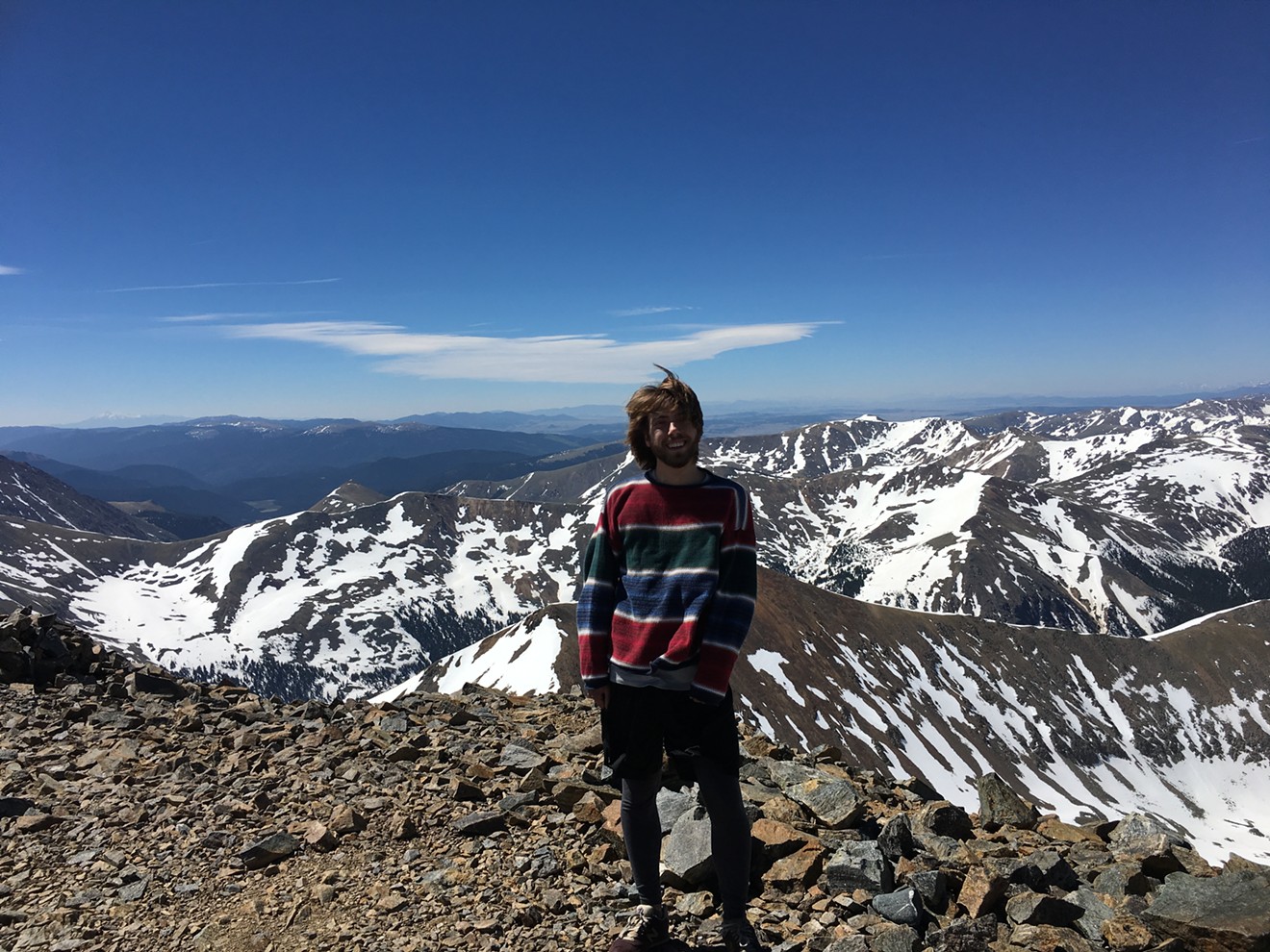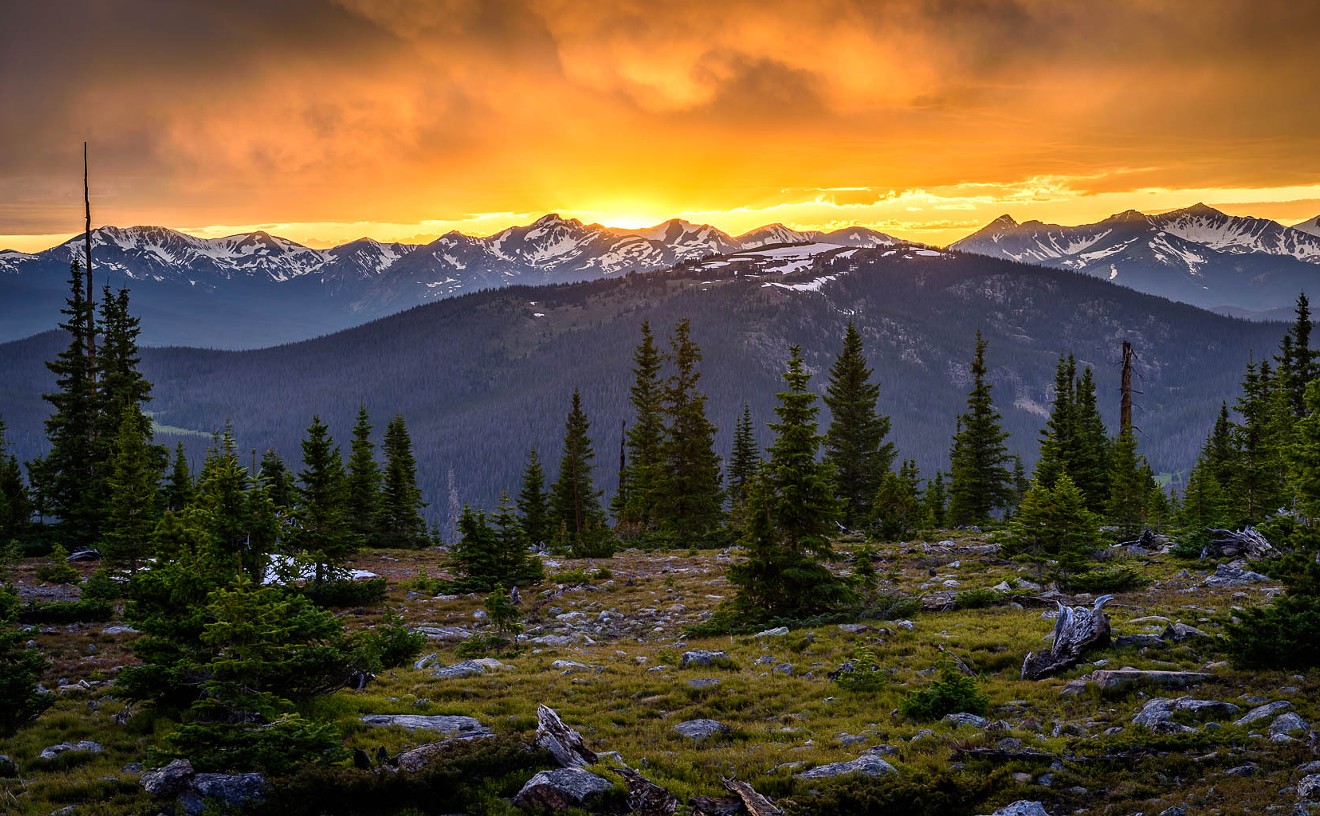In Colorado, it's common knowledge (as well as a source of geographical pride) that more than fifty mountains top 14,000 feet. These peaks provide a fun challenge for hikers, many of whom adopt the number of fourteeners they've bagged as a part of their identity. Now you can count me in, since I just summited my first one. It was indeed a peak experience, but I made a few mistakes along the way. In the interest of sparing other fourteener virgins a lot of pain, here's my experience.
I'm from Framingham, Massachusetts — not exactly mountain country. Most of my hiking experience has been in the White Mountains of New Hampshire, where people brag about 4,000-foot peaks. But while this might sound like the Pee Wee League to Westerners, many of these mountains have the same elevation gain as the Rocky Mountains; they just start much closer to sea level.
After researching which fourteener to tackle first, I arrived at the trailhead of Grays and Torreys Peaks a little before 7 a.m. on a Saturday in June; much of the parking was already gone. (In July or August, when the trail is busier, experts recommend getting there no later than 6 a.m.) I'd already negotiated a challenge: My grandparents' minivan got stuck in a divot on the very bumpy, three-mile road to the trailhead, inspiring a ten-minute rant until some very nice passersby helped push me out. The other reason for getting to the trailhead early: At these elevations later in the day, weather can change suddenly and dangerously, and you don't want to be stuck in intense wind or rain on your descent. It's a good rule of thumb to be on your way down at noon.
As far as supplies went, I was sufficiently prepared for the six-hour hike with three bottles of water, two granola bars and a ham-and-cheese sandwich. Sandwiches are a great trail meal because they have fats and protein (depending on what you put in them); other good trail snacks include jerky, trail mix and other easy-to-pack sources of nourishment. But even before you go, it helps to have a light breakfast. I went for a fried egg, a piece of toast and some grapes, and felt it was a perfect balance between killing hunger and not weighing myself down. Coffee might seem like a good idea, but it can dehydrate you. I had a cup, but only after drinking two tall glasses of water before leaving the house at 5 a.m.
While I was all set with food and drink and plenty of classic New Englander bravado, I now realize that I arrived at the trailhead grossly unprepared. My biggest mistake was probably my footwear: I hiked the nine miles to and from the top of Grays Peak in a pair of worn-out New Balance sneakers that I'd thrifted a few weeks prior. Stylish as these shoes were, they were no match for the snow that layered roughly half of the trail (though much of it was frozen over). Aside from this significant misstep, the rest of my attire was sufficient for the task at hand: a thermal, long-sleeved shirt as well as thermal leggings that I wore under a pair of athletic shorts, a loose-fitting but warm sweater, a windbreaker, and a baseball cap to keep the sun off my face. You may have to ditch the hat, because, as the nice man who took my picture found out, the gusting winds at the summit can whip it clean off your head in the blink of an eye (miraculously, he found his hat on the way down).
My next mistake, which didn't come to haunt me until the next morning, was not bringing sunscreen. Just because it's cold does not mean the sun isn't doing its work. Colorado natives (and just about everyone else, for that matter) already know this, and probably know what happened to me: For the past few days, I've been applying a mask of aloe vera roughly five times a day.
My last mistake, which is another one most people wouldn't make, was coming to the hike alone. Because this is a popular trail, I was never actually by myself; there were always plenty of capable people around to make sure my first fourteener wasn't my last. But the main reason to travel with others is that the trail can get kind of boring. Despite the distracting beauty of the Rocky Mountains, after a few hours you start praying for the end.
By the time I got back to my car, I was exhausted and sunburned, and my feet were quite waterlogged. Even so, the hike was completely worth it. Not only did it felt great to push myself, but the scenery — and that view from the summit — was more than enough reward.
Hiking one of Colorado's fourteeners is an experience on everyone's bucket list. Just remember that you can do it better than I did.
[
{
"name": "Air - MediumRectangle - Inline Content - Mobile Display Size",
"component": "12017618",
"insertPoint": "2",
"requiredCountToDisplay": "2"
},{
"name": "Editor Picks",
"component": "17242653",
"insertPoint": "4",
"requiredCountToDisplay": "1"
},{
"name": "Inline Links",
"component": "18838239",
"insertPoint": "8th",
"startingPoint": 8,
"requiredCountToDisplay": "7",
"maxInsertions": 25
},{
"name": "Air - MediumRectangle - Combo - Inline Content",
"component": "17261320",
"insertPoint": "8th",
"startingPoint": 8,
"requiredCountToDisplay": "7",
"maxInsertions": 25
},{
"name": "Inline Links",
"component": "18838239",
"insertPoint": "8th",
"startingPoint": 12,
"requiredCountToDisplay": "11",
"maxInsertions": 25
},{
"name": "Air - Leaderboard Tower - Combo - Inline Content",
"component": "17261321",
"insertPoint": "8th",
"startingPoint": 12,
"requiredCountToDisplay": "11",
"maxInsertions": 25
}
]












